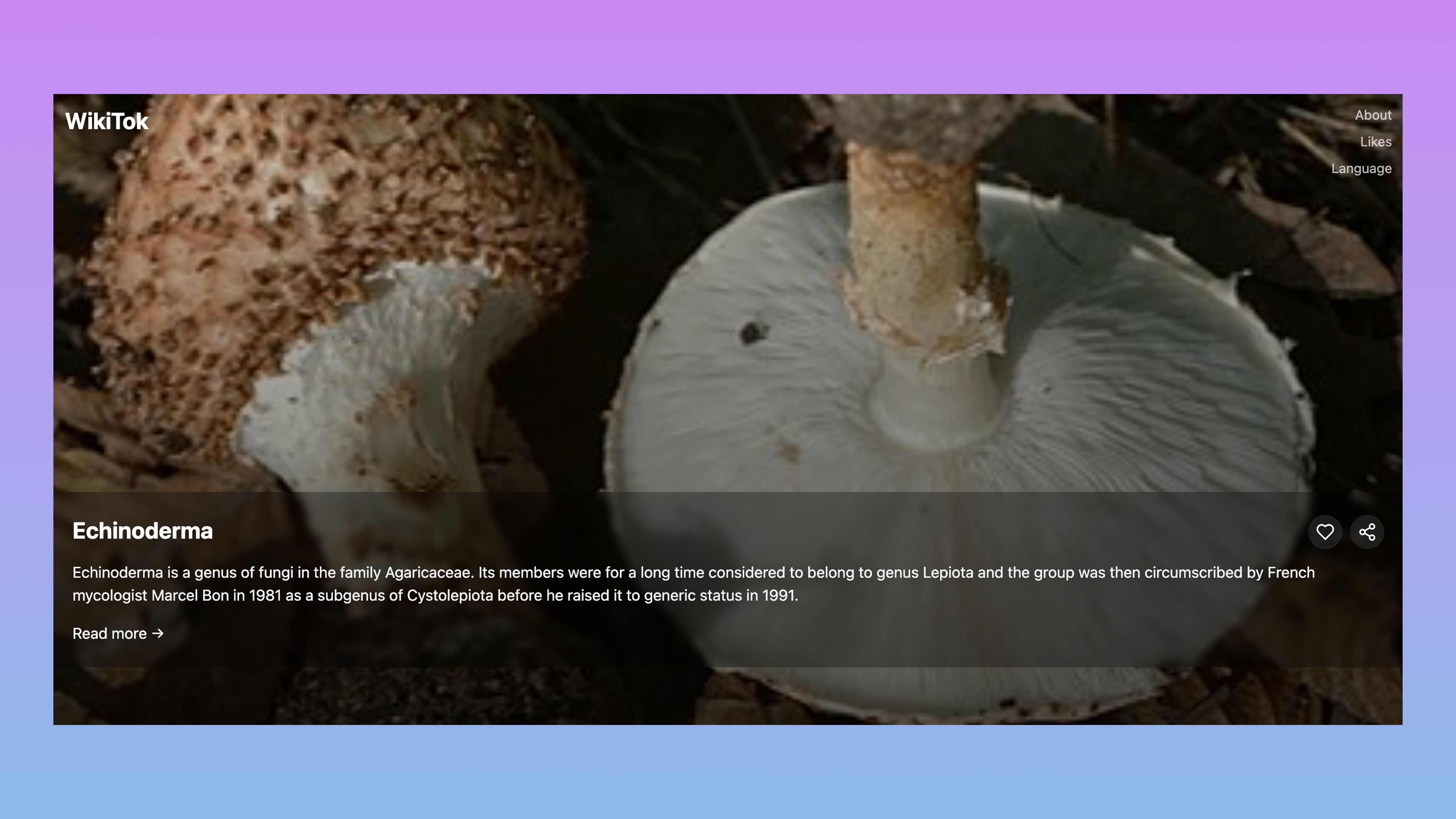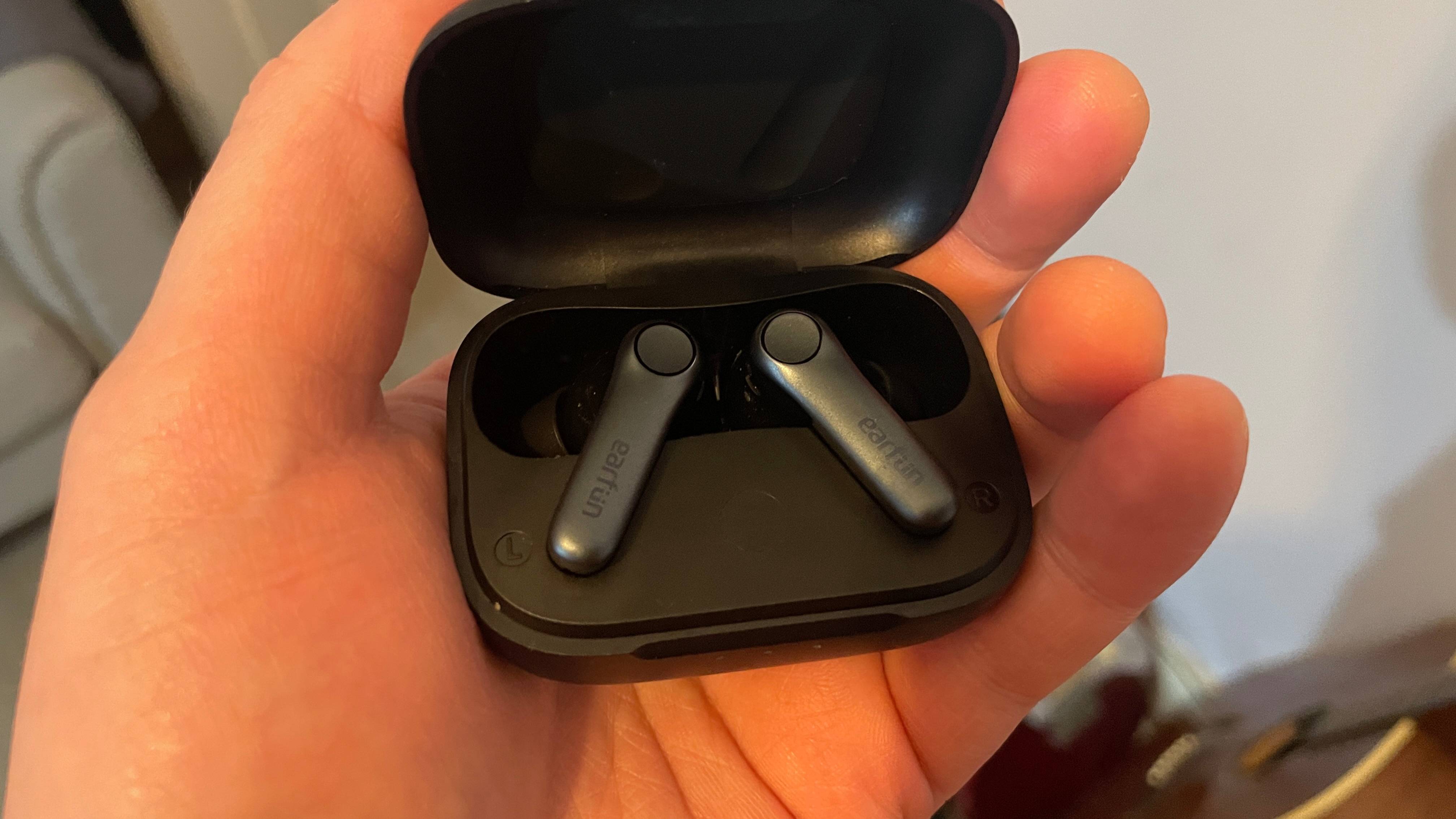Give your Wikipedia rabbit hole deep dives a dollop of dopamine by reading them in an 'anti-algorithm' TikTok-style feed
WikiTok keeps scrollin', scrollin', scrollin'.

Are you familiar with the concept of 'architectural forgery'? Before today, neither was I. In Japan, proposed construction exceeding a certain number of floors must prove it is structurally safe (and, importantly, earthquake resistant) by submitting architectural drawings and calculations to the authorities. In late 2005, it came to light that a number of earthquake design calculations submitted by structural engineer Hidetsugu Aneha had used falsified data, causing a ripple effect that ultimately bankrupted a number of construction firms and real estate companies across Japan.
I learnt the above interesting nugget via WikiTok, a project that reimagines your Wikipedia rabbit hole as a neverending, scrollable feed a la TikTok (via Ars Technica). Rather than offering reams of text, the page presents each article as an image-led stub summary with click-through links to sate your curiosity. Though you can access Wiktok via desktop, it really is best suited to your phone screen—just like its primary source of inspiration.
At present, WikiTok's scrollable selection is a vertical conga line of totally random articles drawn from Wikipedia's API. You can save articles that catch your eye for later by liking them, though, unlike TikTok, there are currently no videos and no invasive data tracking.
The project was made by Isaac Gemal, who used AI coding tools Cursor and Claude to build a prototype in a little under two hours. Gemal told Ars Technica, "The entire thing is only several hundred lines of code, and Claude wrote the vast majority of it." You can poke around the project yourself at GitHub here.
Inspiration for the project first arrived in the form of this X post thread, with Tyler Angert of Patina Systems even coining the term 'Wikitok.' That was on February 3, and Gemal had a prototype by 2 AM the next morning. He told Ars Technica, "AI helped me ship really really fast and just capitalize on the initial viral tweet asking for Wikipedia with scrolling."
Gemal wasn't the only one to throw a hat into the ring. A few hours later, Alexandre Pesant put forward WikTok (minus an 'i'), made using totally different AI coding tool Lovable. In terms of presentation, this is definitely a slicker effort and many more imitators are sure to follow.
As for the future of the WikiTok project (with two 'i's), Gemal also told Ars Technica, "I have no grand plans for some sort of insane monetized hyper-calculating TikTok algorithm. It is anti-algorithmic, if anything."
The biggest gaming news, reviews and hardware deals
Keep up to date with the most important stories and the best deals, as picked by the PC Gamer team.
Rather than losing yourself in TikTok's tidal wave of content, Wikitok could be viewed as an alternative, though I'm not wholly convinced substituting one 'bad' feed for another 'good' feed is necessarily the most satisfying answer to social media overwhelm. For one thing, I don't know about you, but I tend to find that information I learn through my phone screen rarely sticks around in the ol' noggin'—and this study from 2020 suggests that it might not just be me.
As much as I've enjoyed stumbling upon obscure Hindi detective series Byomkesh Bakshi and the historic Royal Theatre in St. Petersburg, Florida, I know there are better ways to learn about either subject.
As an open-source encyclopaedia that could potentially be edited by anyone, you best believe I spend a lot of time hanging out with the citations in the 'references' section. Remember that architectural forgery scandal I referenced right at the start? It makes reference to a single citation, alongside a page-topping plea for additional reliable sources.
It's a timely reminder that not all articles are created equal, and that Wikipedia best serves as a jumping off point for further research.
Best gaming PC: The top pre-built machines.
Best gaming laptop: Great devices for mobile gaming.

Jess has been writing about games for over ten years, spending the last seven working on print publications PLAY and Official PlayStation Magazine. When she’s not writing about all things hardware here, she’s getting cosy with a horror classic, ranting about a cult hit to a captive audience, or tinkering with some tabletop nonsense.


